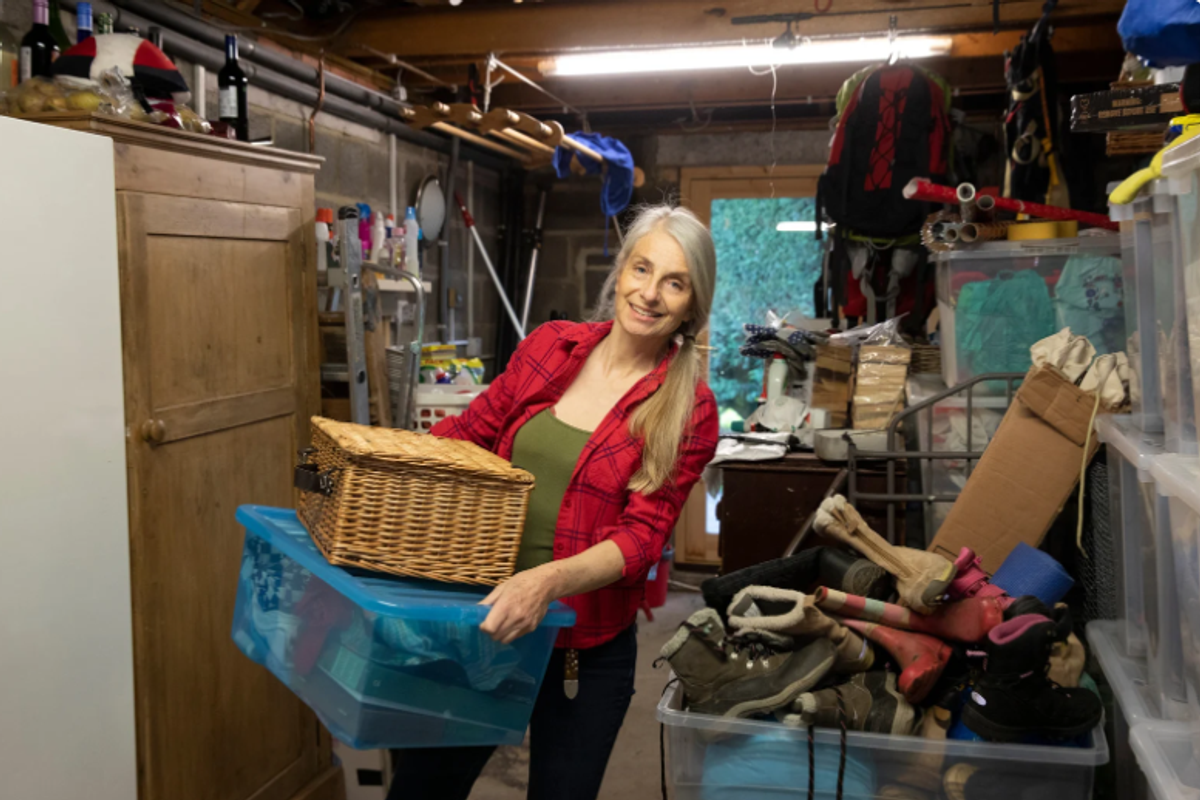51-year-old empty nester who struggled to declutter her house shares 8 tips that finally worked
"Shoes are put away immediately upon walking in the house."
Mom and empty nester shares her tips for decluttering her home.
Deep cleaning and decluttering a home is a daunting task—especially for empty nesters. After spending a lifetime creating memories and living together under one roof, doing a big declutter can take an emotional toll.
It's a milestone that many empty nesters know the sting of. And in a cleaning community on Reddit, a 51-year-old mom and recent empty nester shared her experience cleaning and decluttering her home after entering this new phase of life.
"In my entire life, my house has always been messy. I mean, I didn’t have a disaster-level situation going on, but if someone dropped by unannounced, it would’ve been super embarrassing," she shared. "When my kids were younger, we had a housekeeper because I just couldn’t keep up. Now that we’re empty nesters, I realized I never really learned how to keep house."
- YouTube www.youtube.com
She explained that the book Unf*ck Your Habitat: You're Better Than Your Mess played an integral part in helping her declutter—and offered eight helpful tips to fellow empty nesters looking to organize their new lives.
1. Put stuff away, not down.
Her first tip is the key to decluttering.
"Whatever you have goes right back where it’s supposed to go when I’m done with it," she notes.
2. Do laundry every day.
And she doesn't just wash and dry her laundry when doing it.
"Just one load, start to finish. Wash, dry, fold, and put away," she shares. "Also, no chair or floor laundry. It gets put in the hamper or hung back up. No clothes are ever out."
3. I make the bed every day.
The benefits keep on giving by doing this, she notes.
"It just makes my bedroom look cleaner and I smile every time I come in my room," she writes. "Plus we aren’t fighting over the covers when we get in because the bed is straightened out."
- YouTube www.youtube.com
4. Do a quick daily clean-up of commonly used spaces.
She cleans the places that she and her husband use frequently.
"I keep a stack of cleaning rags in my master bath because it’s the only bathroom that’s used every single day. Every night, I spray the counter, wipe everything down, put everything back (that my husband leaves out), and wipe the mirror," she explains. "I also wipe down the toilet. I find that I don’t need a huge, big cleaning of this space because I’m keeping it up daily. Same goes for the kitchen."
5. Dishes are always put away, cabinet or dishwasher.
No dishes in the sink or stuck in the dishwasher.
"Dishes are finished in the dishwasher? It’s emptied and dirty ones are placed inside while waiting for the dishwasher to get full," she notes.
@brunchwithbabs Life Changing Dishwasher Hack #tutorials #kitchenhacks #parentsoftiktok #dishwasherhack
6. Don't neglect your shoes.
When she takes them off, they get put away.
"Shoes are put away immediately upon walking in the house," she shares.
7. Knock out small tasks.
There is no time to waste.
"If it takes less than 5 minutes clean it while you’re waiting for something else to get done," she writes.
8. Take no days off.
Rather than assign certain days for cleaning, she is constantly doing it throughout the week.
"Lastly, I do not have scheduled cleaning days. I just do something all the time," she explains. "My life is kind of unpredictable, we love traveling or going out for the day so my so called cleaning schedule would be shot to hell every time. It’s better this way, because now I never feel behind."
Editor's Note: This story originally contained a typo in its text. It has since been corrected.
- Too much stuff causes stress. Here are 4 simple mantras to help you declutter for good. ›
- A former hoarder gives life-changing hacks on how to declutter your world ›
- Mom on 2-year decluttering journey shares her 'use it or lose it' hack ›
- How to make your home smell good, according to cleaning experts - Upworthy ›

